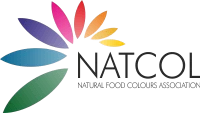NATCOL
Introduction to the Legislation of Food Colors in Europe
NATURAL FOOD COLOURS ASSOCIATION
The history of the food colors legislation can be found here.
At European level Regulation (EC) No 1333/2008 lays down detailed rules on the use of food additives and Regulation (EU) 231/2012 defines specifications for food additives.
These Regulations define the term ‘color’, list the permitted colors and the purity criteria with which they must comply, set down conditions of use for colors in food, control the sale of colors direct to the public and prohibit the sale and use of colors and the sale of food containing colors that do not comply with these provisions.
As with all other additives used in food, colors may only be used if they perform a useful purpose, are safe and do not mislead the consumer.
Colors may be used to:
- restore the original appearance of food whose color has been affected by processing, storage, etc.
- make food visually appealing and give color to otherwise colorless food.
- giving color to food otherwise colorless.
colors add or restore color in a food. They are not substances that are normally consumed as foods by themselves or used as characteristic ingredients of foods. These would be regarded as ingredients, to be labelled as such, even when added principally for coloring purposes.
If the primary function of a substance added to food is anything other than as a color, whether or not it has a secondary coloring effect, then it is not caught by the definition of color.
In 2008, the Commission issued Regulation 1331/2008 by which all food additives must undergo a safety evaluation by EFSA prior to their authorisation by EU risk managers. According to Commission Regulation 1333/2008, all food additives authorised for use in the (EU) before 20 January 2009 should be subject to a new risk assessment by EFSA.
Commission Regulation 257/2010 established a programme for the re-evaluation of approved food additives. According to this programme, food colors have been evaluated as a priority as these were among the first additives to be assessed by the former Scientific Committee on Food many years ago. For some colors new studies have become available that need to be taken into account. This work is ongoing and most of the scientific opinions are available via the EFSA website.
USA
US Food color Regulatory Landscape
The U.S. Food and Drug Administration’s (FDA) has regulatory oversight for color additives. A color additive, as defined by regulation, is any dye, pigment, or other substance that can impart color. For example, when a food substance such as beet juice is deliberately used as a color, as in pink lemonade, it is considered a color additive (21 CFR §70.3).
The U.S. FDA has divided food color additives into two groups:
A. color additives exempt from certification and
B. color additives subject to certification.
“color additives exempt from certification” include those derived from fruits, vegetables, plants or mineral sources. The colors that NATCOL represent fall under this category.
“color additives subject to certification” are synthetic dyes, lakes, or pigments, which are subject to color Additive Batch Certification by the US FDA.
In terms of declaration and labelling, color additives are typically declared by their common name in the ingredient list and by using the term “color” to make clear that a color additive has been used in the food, per 21 CFR 101.22(k).
